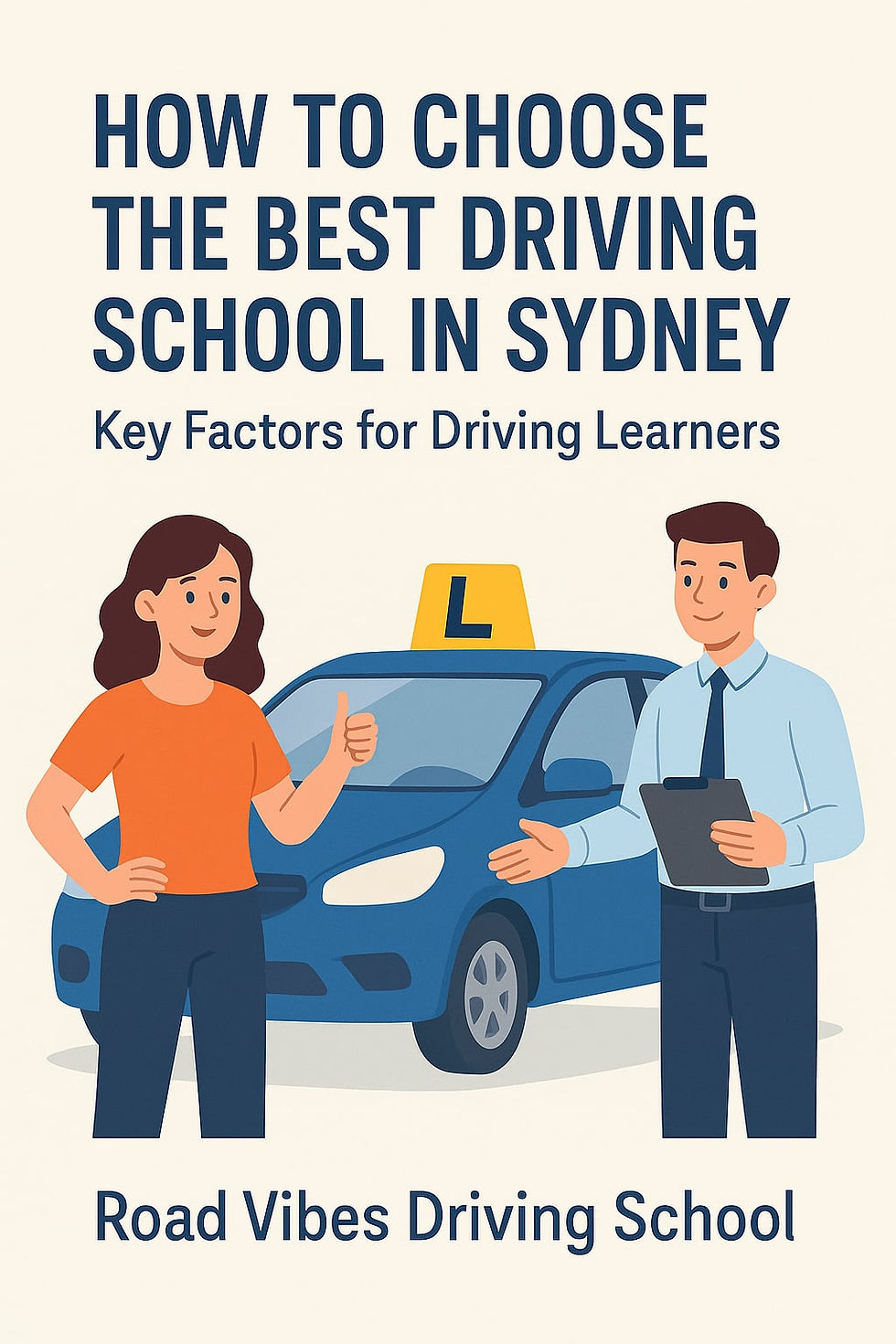Night Driving Techniques for Learners: How to Stay Safe and Confident on the Road
- Bibek Shah

- May 26
- 3 min read
Driving at night can feel intimidating for many new drivers. Reduced visibility, glare from headlights, and fatigue can all make driving more challenging. However, with the right techniques, you can boost your confidence and safety on the road after dark. This post shares practical night driving strategies that every learner should master to enhance their skills.
Understand Your Vehicle’s Lights
Before you hit the road at night, get to know your vehicle's lighting system. Your headlights are crucial for illumination, and using them properly is crucial for safe driving.
Start with low beam headlights as they reduce glare for oncoming drivers while still giving you a clear view of the road. In fact, using high beams can increase visibility by up to 50% in the absence of streetlights, but use them wisely. Only turn them on in completely dark areas where there is no oncoming traffic. Always remember to switch back to low beams when you spot another vehicle coming your way.

Adjust Your Mirrors
Adjusting your mirrors before starting your night drive is essential for reducing blind spots. Your rear view mirror should be positioned so you can see directly behind you without adjusting your body.
Set your side mirrors to slightly outward angles to broaden your view. This simple adjustment can increase your awareness of vehicles entering your blind spots by up to 40%.
Taking time to set your mirrors can greatly improve your visibility while driving at night.

Use Defensive Driving Techniques
Defensive driving is vital, especially at night when visibility is lowered. Maintain a safe distance from the vehicle in front of you, ideally three seconds at the speed you're traveling. This distance allows you to react in time to sudden stops, which can be difficult to notice in the dark.
Adjust your speed based on road conditions. Slow down if the roads are wet or poorly lit. Remember, driving 5-10 mph slower can increase your reaction time, giving you an edge if something unexpected happens. Also, be mindful of distractions. Silence your phone and limit conversations to stay focused on the road.
Manage Glare
Glare from oncoming headlights can be challenging during night drives. Combat glare using your vehicle's features effectively. Polarized sunglasses can reduce brightness, making it easier to see.
If oncoming headlights are blinding, shift your focus slightly to the right side of the road instead of directly at the lights. This allows your eyes to adjust better and maintain visibility without being overwhelmed.

Be Mindful of Fatigue
Ensure you’re well-rested before driving at night. If you start to feel drowsy, pull over safely and take a break or switch drivers if you have a passenger. Look for signs of fatigue, such as frequent yawning or drifting out of your lane. If you notice these symptoms, stop driving.
Practice Nighttime Driving Skills
Like any skill, practice is key to becoming a better night driver. Gain experience gradually by driving in low-traffic areas after dark. Start with short trips and slowly extend your distance as you build comfort.
As you practice, consciously apply the techniques you've learned. This will reinforce your confidence and help you adapt to varied nighttime driving scenarios.
Stay Aware of Weather Conditions
Weather can dramatically affect visibility and traction at night. Rain, fog, or snow all require different driving tactics.
In rain, turn on your headlights and reduce your speed by at least 10 mph. Roads can be slippery, increasing stopping distance. In fog, always use low beam headlights; high beams can reflect off the fog and worsen visibility.
Check the weather forecast before heading out, and adapt your plans based on conditions.
Final Thoughts
Driving at night can be a manageable task for learners. By applying techniques such as understanding your vehicle's lights and practicing defensive driving, you can drive with confidence in the dark.
Remember, the more you practice, the more intuitive your reactions will become. Always prioritize your safety and the safety of those around you. Happy driving!
_edited_edited.png)



Comments